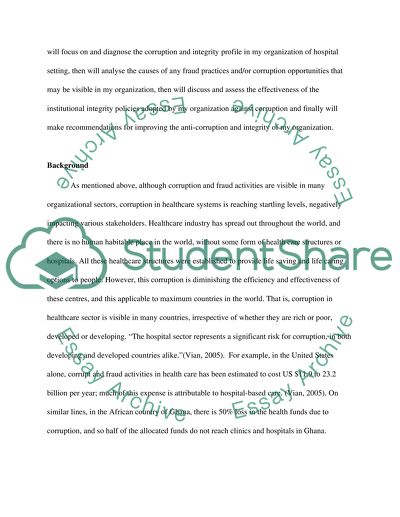Cite this document
(“Anti- corruption and integrity at a hospital Essay”, n.d.)
Retrieved from https://studentshare.org/environmental-studies/1420091-anti-corruption-and-integrity-at-a-hospital
Retrieved from https://studentshare.org/environmental-studies/1420091-anti-corruption-and-integrity-at-a-hospital
(Anti- Corruption and Integrity at a Hospital Essay)
https://studentshare.org/environmental-studies/1420091-anti-corruption-and-integrity-at-a-hospital.
https://studentshare.org/environmental-studies/1420091-anti-corruption-and-integrity-at-a-hospital.
“Anti- Corruption and Integrity at a Hospital Essay”, n.d. https://studentshare.org/environmental-studies/1420091-anti-corruption-and-integrity-at-a-hospital.


